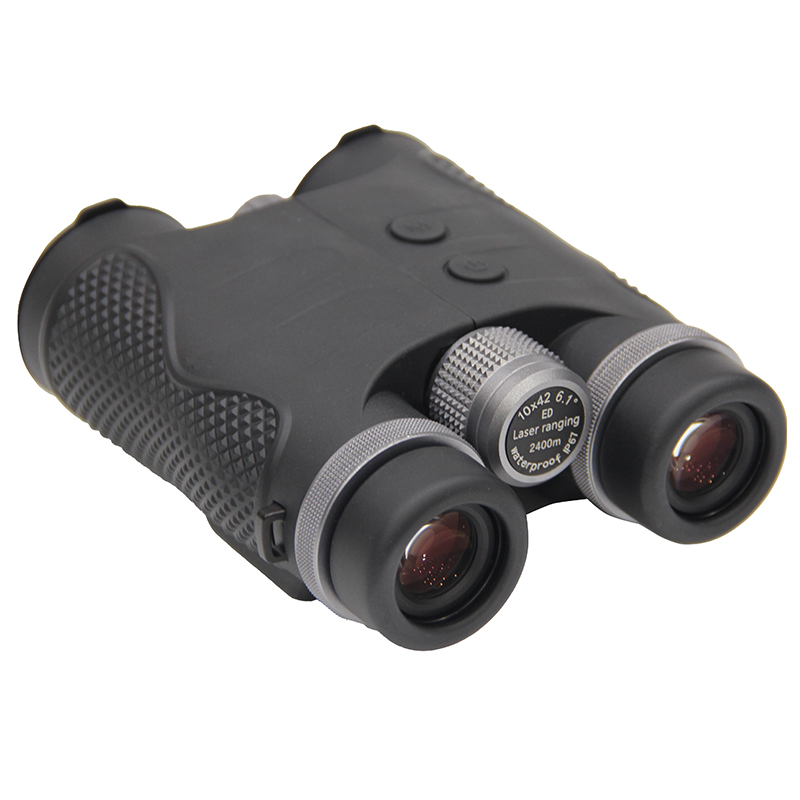This is a crucial question. The core of a binocular laser rangefinder is the combination of "binocular telescope + laser ranging." Its working principle can be broken down into two parts: the core is calculating distance using laser time-of-flight or phase difference, while also providing telescopic observation capabilities:
I. Basic Principle of Binocular Telescope: Similar to ordinary binoculars, it receives target light through two sets of symmetrical objective lenses. After refraction by prisms (commonly Porro prisms or roof prisms), the inverted image is corrected to an upright image. This image is then magnified through the eyepiece, allowing the user to clearly observe distant targets and providing an "aiming reference" for laser ranging—essentially locking onto the target through the telescope function before initiating ranging.
II. Core Principles of Laser Rangefinders (Two Mainstream Methods)
1. Pulse Method (Most Commonly Used, Suitable for Medium to Long Distances)
This is the method used in most binocular laser rangefinders on the market. The principle is simple and direct:
Emission: The rangefinder's built-in laser diode emits an extremely short laser pulse (pulse width is usually on the nanosecond scale, imperceptible to the naked eye) towards the target locked by the binoculars;
Reception: The laser pulse reflected by the target is received by the rangefinder's photodetector (coaxial or offset from the transmitter);
Calculation: The instrument's built-in high-speed timer accurately measures the total flight time (t) of the laser pulse from "emission" to "receiving the reflected light";
Distance Calculation: Calculated using the formula "Distance (d) = Speed of Light (c) × Flight Time (t) ÷ 2"—dividing by 2 is because the laser has to travel a round trip from "rangefinder → target → rangefinder" (the speed of light is approximately 3 × 10⁸ meters/second, so even for a distance of 1000 meters, the round trip time is only about 6.7 seconds). 1. Nanosecond (requires extremely high timer precision).
2. Phase Method (suitable for short distances, higher precision)
This method is often used in short-distance measurement scenarios where extremely high precision is required. The principle is as follows:
Emission: A laser diode emits a "modulated continuous laser" (the laser intensity changes periodically with a specific frequency);
Reception: The modulated laser reflected from the target is received, and the phase difference (Δφ) is calculated by comparing the phase of the emitted laser and the phase of the reflected laser;
Distance Calculation: Based on the modulation frequency (f) and the phase difference, the distance (d) is calculated using the formula: "Distance (d) = (Phase difference Δφ × Speed of light c) ÷ (4π × Modulation frequency f)". The round-trip distance of the laser must also be considered.

The Onick Black Hawk binoculars offer all-weather brightness and clarity. Equipped with ED extra-low dispersion glass, premium fully coated optics, and highly coated BAK4 prisms, they gather more light and produce brilliant color fidelity. Waterproof, shock-resistant, and rubberized for protection, they're ready for any eventuality. Even in the harshest conditions, with the Onick Black Hawk binoculars, your view will be crystal clear!
With a range of up to 2400 meters, they combine rangefinder, anglefinder, and telescope functions. The magnesium alloy body is strong and lightweight. IP67 waterproof, nitrogen-sealed, and coated with a waterproof film on the exterior glass protect against dust, water, and mildew. This is a professional industrial or outdoor device that integrates high-performance optics and precision laser ranging capabilities.

Product Features:
1. Combines distance measurement, angle measurement, and telescope functions.
2. 2400m measurement range with an error of only ±0.5m + Dx 0.1%.
3. Automatic power-off system, rugged design, and comfortable operation.
4. Low laser power, eye-safe.
Applications:
Outdoor travel, wilderness exploration, sporting events, concerts, power safety inspections, forestry surveys, security and police use, military patrols, industrial inspections, maritime observation, archaeological research, railway route selection, and land resources surveys.
In short, the working logic of a binocular laser rangefinder is: first, use binoculars to find and aim at the target; then, use a laser pulse or modulated laser to measure the travel time/phase difference; finally, calculate the target distance using the speed of light formula, and display the distance value in the field of view.


